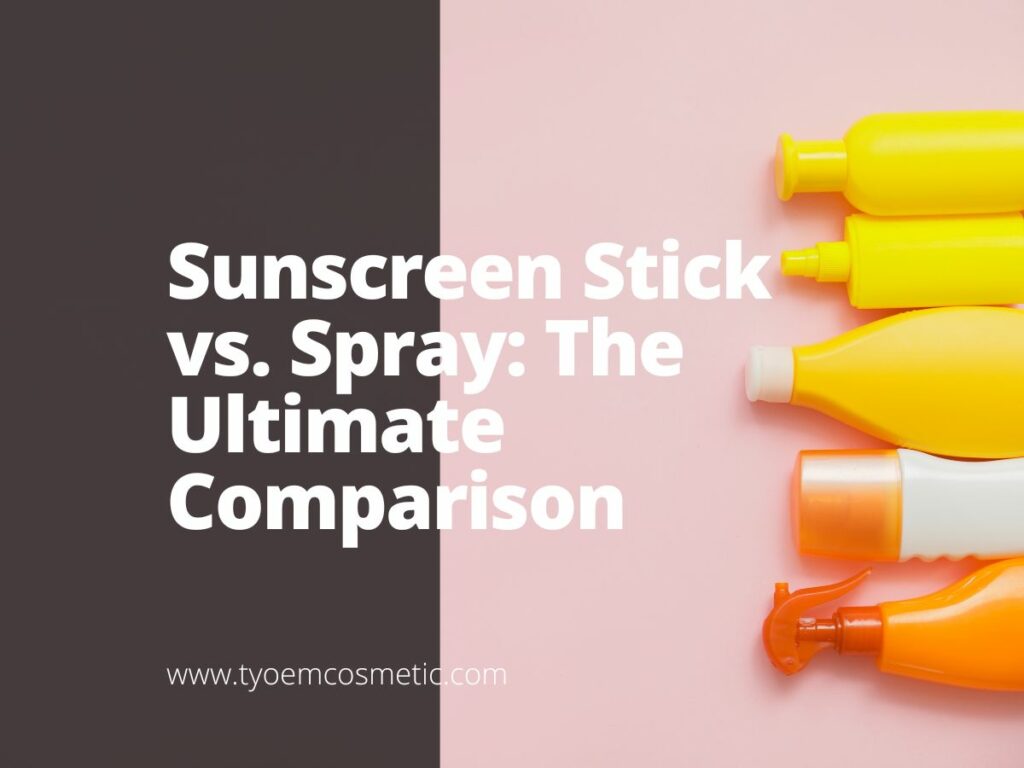Choosing the right sunscreen for your product line isn’t just about protection.
I remember working with a client who tested both formats on their in-store demos and quickly realized how application experience swayed customer perception.
That is why as an expert in sunscreen formulation and product development, I’ve worked with many businesses to find the right fit for their brand.
You can trust this review because it’s based on in-depth analysis, performance testing, and years of experience helping businesses create standout sun care products.
In this article, I’ll walk you through the differences between stick and spray sunscreens, from application ease to packaging and beyond.
You’ll leave with the clarity to choose the option that best aligns with your business goals.
So, which sunscreen format will give your product line the competitive edge?
Let’s get started!
Quick Comparison Chart
Are you looking to add the perfect sunscreen option to your lineup? I know it can be tough to compare sticks and sprays, so I’ve put together this quick guide to help you see the key differences at a glance.
| Feature | Sunscreen Stick | Sunscreen Spray |
| Application Method | Rubbed directly onto skin | Sprayed over skin from a distance |
| Best For | Face, small areas (nose, ears, around eyes) | Large body areas (arms, legs, back) |
| Mess/Control | Precise, no mess, no drift | Can be messy or uneven in windy conditions |
| Portability | Compact, travel-friendly | Bulkier; may not be allowed on flights |
| Coverage Consistency | Easier to see coverage, less likely to miss | Risk of uneven application or missed spots |
If you’d like to dig deeper into how to choose the right sunscreen format, check out the full guide below for a detailed look at everything you need to know. Let me know if you want to personalize this chart for your brand’s needs!
1. What is a Sunscreen Stick?
Bringing sunscreen sticks into your product lineup isn’t just about offering sun protection. It’s about giving your customers a product that’s simple to use and mess-free. These solid formulas glide on smoothly and fit easily into a pocket or bag.
I’ve noticed that customers love the no-mess promise of sunscreen sticks. They’re small, practical, and they do exactly what they say.
Here’s why they make sense for your brand:
- Precise Coverage: Easy to apply exactly where it’s needed, no extra fuss.
- Travel-Friendly: Small and handy so customers can take them anywhere.
- Reliable Formula: Made to last through a busy day outside.
- Customer Favorite: Neat and easy application means happy, returning buyers.
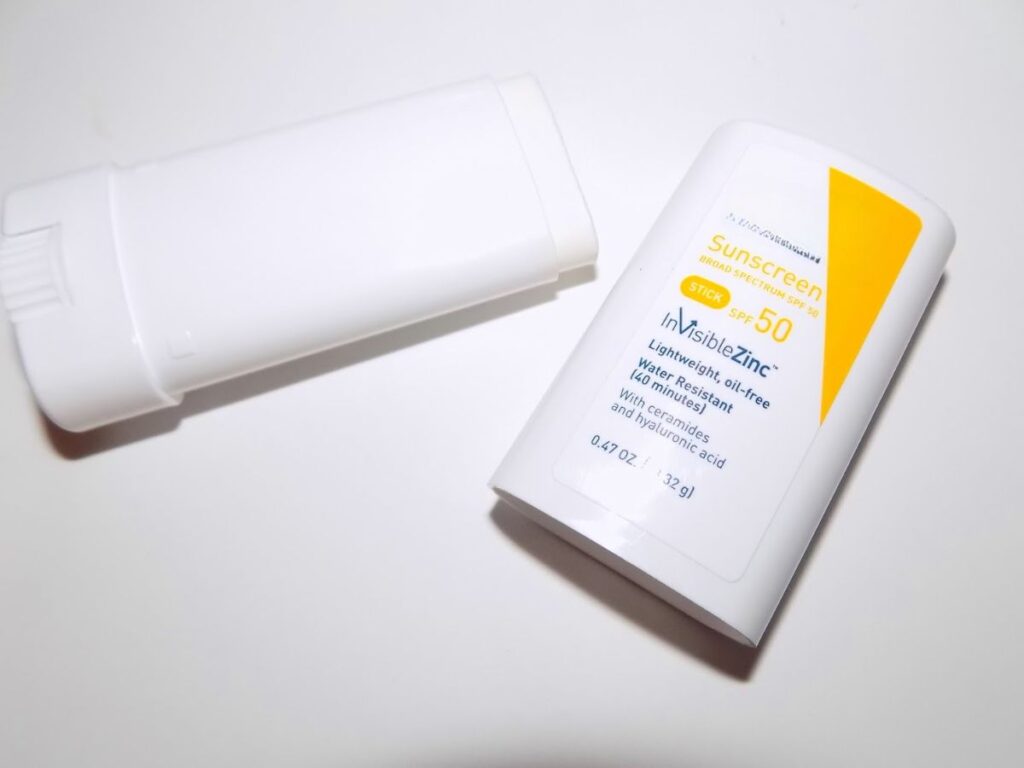
2. What is a Sunscreen Spray?
Sunscreen sprays have a way of making sun protection feel light and breezy. They cover large areas fast and dry in seconds without that greasy feeling. Customers love how quick and easy they are to use, especially when they’re in a rush.
I’ve seen how sprays turn heads at launch events and in stores. It’s that modern, convenient touch that people instantly get behind.
Here’s why sprays are worth adding to your lineup:
- Fast, Even Coverage: Customers can get full coverage in less time.
- Lightweight Comfort: A fresh, clean finish that feels great all day.
- No Hands Needed: Just spray and go, perfect for busy days.
- Appealing Design: Sleek bottles that look good and sell well.

3. Comparison of Ingredients
When it comes to sunscreen, what’s inside really matters. Different formulas can impact how your product feels, performs, and meets customer needs. I’ve seen firsthand how choosing the right ingredients can make or break a product’s success.
Below, I’ve outlined the key differences between sticks and sprays.
Sunscreen Stick
- Rich, Nourishing Base: Sticks often contain a blend of oils and waxes that create a smooth, protective layer on the skin. TY Cosmetic’s sunsticks are crafted with this in mind, using a carefully balanced base that helps the formula stay put while keeping the skin comfortably moisturized.
- Simple Formulation: Most sticks use a streamlined ingredient list to avoid unnecessary irritants. This simplicity can be a big selling point for your clients who market to sensitive skin customers.
- Added Skincare Ingredients: Many sunscreen sticks include extra ingredients like shea butter or vitamin E. These additions can soften and soothe the skin, turning your product into more than just sun protection. Your customers will notice when a sunscreen also feels like a skin treatment.
- Solid Consistency: Because sticks are solid, they can support more protective emollients and skincare boosters. This solid texture can give your product an edge in a crowded market. It also makes application quick and clean for your clients.
Sunscreen Spray
- Light, Fast-Drying Formula: Sprays usually rely on alcohol-based ingredients that evaporate quickly. This creates a weightless finish that feels almost invisible. Your customers will love the light, non-sticky feel that lets them get on with their day.
- Focus on Spreadability: Sprays are all about getting an even coat over larger areas. They use thinner emollients and propellants that help the formula glide across the skin. This is perfect for businesses targeting active lifestyles and convenience-focused buyers.
- Cooling Sensation: Many sprays include ingredients that feel refreshing on hot skin. This cooling effect can be a real treat in the sun. It’s a little touch that makes your product feel premium.
- Fewer Heavy Additives: Because sprays are all about weightlessness, they skip heavy oils and waxes. This keeps them feeling fresh and clean, even when layered over other products. It’s a clear advantage for your customers who want a no-fuss, modern formula.
4. Texture
Texture is one of those details that customers remember long after the first application.
It’s the first thing they notice and what keeps them coming back. I’ve tested dozens of sunscreen formulas and know that a product’s texture can really set it apart.
Let’s explore how the two feel on the skin.
Sunscreen Stick
- Smooth and Balm-Like: Sticks feel creamy and smooth as they glide over the skin. They leave behind a soft layer that doesn’t feel sticky or heavy. Your customers will appreciate how the balm texture makes it easy to target small areas without fuss.
- Targeted Layer: The solid formula creates an even layer that doesn’t drip or run. This makes sticks perfect for precise application on the face or shoulders. It also gives your clients peace of mind knowing they’re fully covered.
- Matte Finish: Most sticks dry down to a natural, matte finish. That means no unwanted shine or greasy look. It’s a nice bonus for your customers who want sun protection that stays invisible.
- Non-Runny: Sticks stay put, even in heat or humidity. This makes them reliable for outdoor use, and your clients will love that they won’t need to constantly reapply or worry about it melting.
Sunscreen Spray
- Ultra-Light and Airy: Sprays go on as a fine mist, creating an almost weightless layer. It feels refreshing and comfortable, even in hot or humid weather. Your clients will love how it doesn’t feel like they’re wearing anything at all.
- Quick to Dry: The mist dries in seconds, avoiding any sticky feeling. That’s a big plus for your customers who want to reapply quickly and get back to their day. It also helps cut down on messy hands or streaks.
- Cool and Refreshing: The mist often has a cooling feel that can be a welcome relief in the sun. Your clients will love that quick burst of freshness. It’s a small detail that can create a positive impression of your brand.
- No Heavy Buildup: Sprays are designed to be layered without adding weight. This is great for your customers who need to reapply often. It keeps skin feeling light and clean, even with multiple layers.
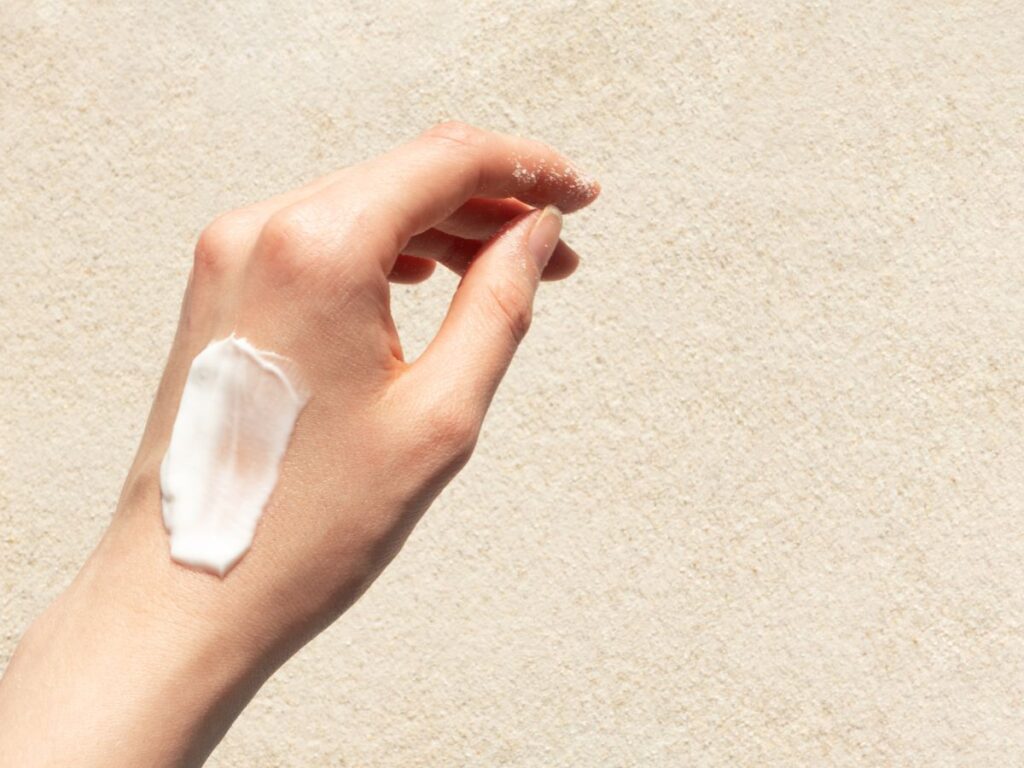
5. Water Resistance
Water resistance isn’t just for pool days, it’s for sweat, weather, and active customers who need long-lasting protection. I’ve noticed how this one feature can turn a basic sunscreen into a real winner for your product line.
Here’s how each format stands up to water and wear.
Sunscreen Stick
- Highly Water-Resistant: Sticks often use waxy bases that really cling to the skin. This means your product will last longer even in wet or sweaty conditions. Your customers will love knowing they’re still protected after a workout or a swim.
- Reliable Coverage: Because sticks don’t run or streak, they keep coverage even. Your clients won’t have to worry about patchy protection or needing to touch up constantly. That’s a big relief for busy days.
- Great for Long Wear: Many sticks have water resistance ratings up to 80 minutes. This long-lasting coverage can be a key selling point, especially for outdoor-focused brands. It’s a promise that your product is built to last.
- Less Need for Reapplication: Because of the clingy texture, sticks usually need fewer touch-ups throughout the day. That’s a win for your customers who don’t want to stop what they’re doing to reapply.
Sunscreen Spray
- Good But Lighter: Sprays have water resistance but can rinse off a bit faster than sticks. They’re better for light exposure rather than intense water sports. Your clients should know they might need to reapply more often.
- Quick Reapplication: On the bright side, sprays are so fast to use. Your customers can just mist and go, making up for the fact they might need to reapply a little more often.
- Not as Tenacious: Sprays hold up for light sweat or short dips but may not cut it for long swims. It’s something to note if your clients’ customers are particularly active.
- Ideal for Mild Use: For casual days in the sun, sprays have enough water resistance to get the job done. They’re easy and lightweight, perfect for on-the-go refreshers. TY Cosmetic’s sunscreen spray is designed for this exact purpose. It’s quick to apply, fast-absorbing, and ideal for light, everyday protection.
6. Application Scenarios
Where and how sunscreen is used can determine the best option for your product line. Each format has its sweet spot, and knowing that can help you make the smartest choice. I’ve seen how these small details make a big difference for brands that want to stand out.
Let me walk you through when each type shines.
Sunscreen Stick
- On-the-Go Touch Ups: Sunscreen sticks are perfect for quick reapplications when your customers are in a hurry. They’re neat, easy to use, and fit right into a pocket or bag. This convenience makes them a smart choice for travel kits and outdoor excursions.
- Outdoor Sports and Work: Sticks hold up well in sweat and heat, making them ideal for active people. Your clients can market them to outdoor enthusiasts who want solid protection. It’s a product that’s always ready to perform.
- Targeted Areas: Sticks are great for delicate areas like the face, ears, or back of the hands. Your customers will appreciate the control and precision they offer. No wasted product, just solid coverage.
- Travel-Friendly: With no spills or mess, sticks are easy to stash in any travel bag. Your clients can highlight how they’re perfect for on-the-go lifestyles. That practicality adds real value to your product range.
Sunscreen Spray
- Covering Large Areas: Sprays make it easy to get an even coat on the arms, legs, and back. Your customers will love how quickly they can cover large areas. This is a real time-saver on busy days.
- Quick Reapplication: If time is tight, sprays make it simple to top up throughout the day. Your clients can promote them as the go-to option for fast reapplication. This is perfect for people who don’t want to fuss with creams.
- Warm-Weather Comfort: Sprays provide a cooling sensation that feels amazing in hot weather. Your customers will love that refreshing feel on sweaty skin. It’s a small detail that can make your product stand out.
- Family-Friendly: Sprays are easy to share, making them a favorite for families. Your clients will see how this universal appeal boosts their brand’s reach. It’s an all-around win for convenience and comfort.
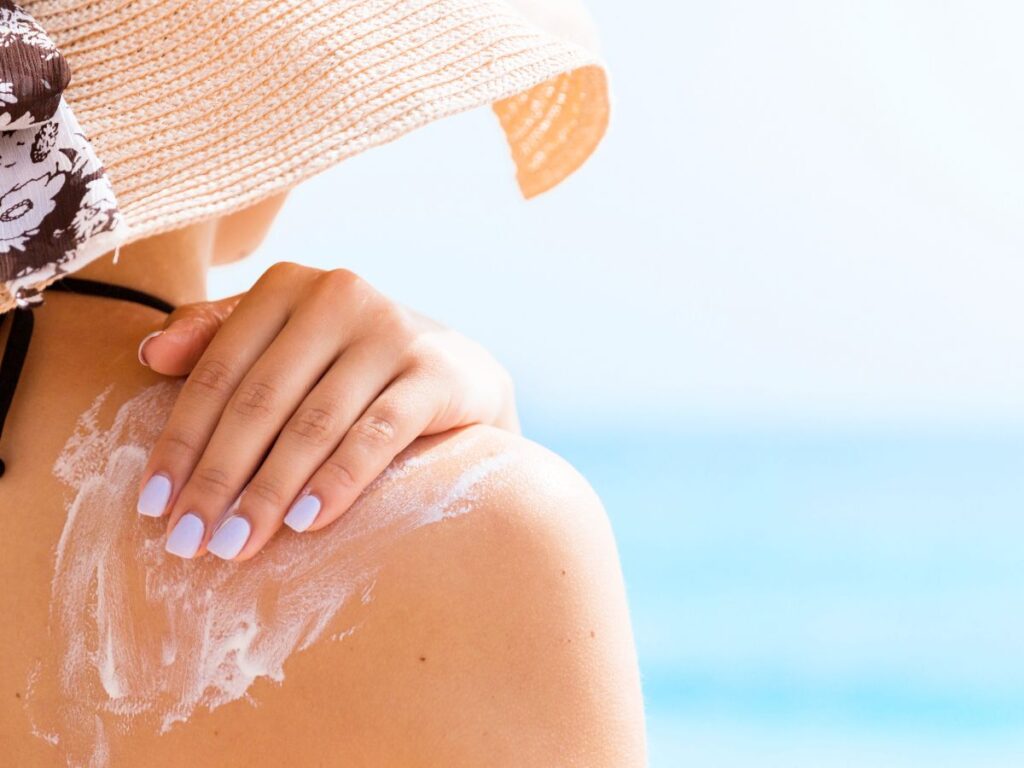
7. Safety
Safety is something your customers care about deeply. They want products that work and feel gentle on their skin. From my experience, safe formulas and clear instructions are what keep your clients’ brands strong.
Below, I’ve outlined how each product measures up.
Sunscreen Stick
- Fewer Ingredients: Sticks tend to have simpler formulations that are easier on sensitive skin. Your clients can market them as the choice for people who want minimal ingredients. This simplicity is a real plus for anyone worried about irritation.
- No Overspray: Because sticks don’t use a spray mechanism, there’s no risk of inhaling product. This adds to the safety and comfort of using them. Your customers will feel more confident with that targeted, direct application.
- Solid Application: Sticks are easy to apply exactly where they’re needed. This avoids missed spots or wasting product. Your clients can highlight how this means reliable protection for every use.
- Low Risk of Irritation: The solid texture means it stays in place, avoiding accidental contact with eyes or mouth. This keeps things comfortable and safe for your customers.
Sunscreen Spray
- Quick and Easy: Sprays are convenient, but your clients should remind customers not to inhale them directly. Clear instructions on the label help everyone use them safely. Your clients will see that careful guidance pays off in trust and loyalty.
- Even Coverage: Sprays create a fine mist that can cover skin evenly. This helps reduce the risk of missed spots and sunburn. Your customers will feel more protected with such an easy-to-use product.
- Potential for Overspray: It’s important to mention that sprays can travel through the air. Your clients can add usage tips to ensure a safe application. This shows you care about the end user’s experience.
- Formulas for Sensitive Skin: Many sprays are tested for sensitive skin, offering a gentle option that still performs. Your clients can highlight this gentle touch as a real advantage for health-conscious buyers.
8. SPF Performance
SPF is the first thing your customers look for when they pick up a sunscreen. It’s the promise that your product will really protect them. Over the years, I’ve seen how clear SPF claims and real protection help build trust in your brand.
Let’s see how sticks and sprays measure up on SPF.
Sunscreen Stick
- High and Steady: Many sticks come in SPF 30 or higher, which is exactly what your clients’ customers want. This high level of protection adds real value to your product line. It’s a key point you can proudly highlight.
- Thicker Coverage: Because of the solid texture, sticks create a consistent, reliable barrier against the sun. Your customers can trust that their skin is protected from the start. That’s a big win for your brand’s reputation.
- Less Mess, More Protection: Sticks go on neatly, so there’s less waste and better coverage. Your clients can market them as the sun protection solution that’s precise and effective. Customers love that kind of performance.
- Trusted SPF Claims: Sticks are usually tested and verified, so it’s easier to back up the SPF number you put on the label. That’s the kind of trust-building detail your customers appreciate.
Sunscreen Spray
- High SPF Options: Many sprays are formulated with SPF 30 or more, meeting what your customers are looking for. It’s an easy way to satisfy your clients’ market demands. Everyone loves a product that hits the sweet spot of protection.
- Easier Reapplication: Sprays are so quick to use that people are more likely to reapply. Your clients can highlight how this ensures consistent SPF coverage all day long. It’s a practical advantage customers will love.
- Risk of Missed Spots: Sprays can sometimes miss spots if people aren’t careful. Your clients can help avoid this by including clear usage instructions. Customers will see that your brand wants them to get the most out of their sunscreen.
- Clear SPF Labeling: Sprays often come with bold, clear SPF numbers right on the front. Your clients will appreciate how easy it is to market these products. Clear labeling builds trust and keeps customers coming back.
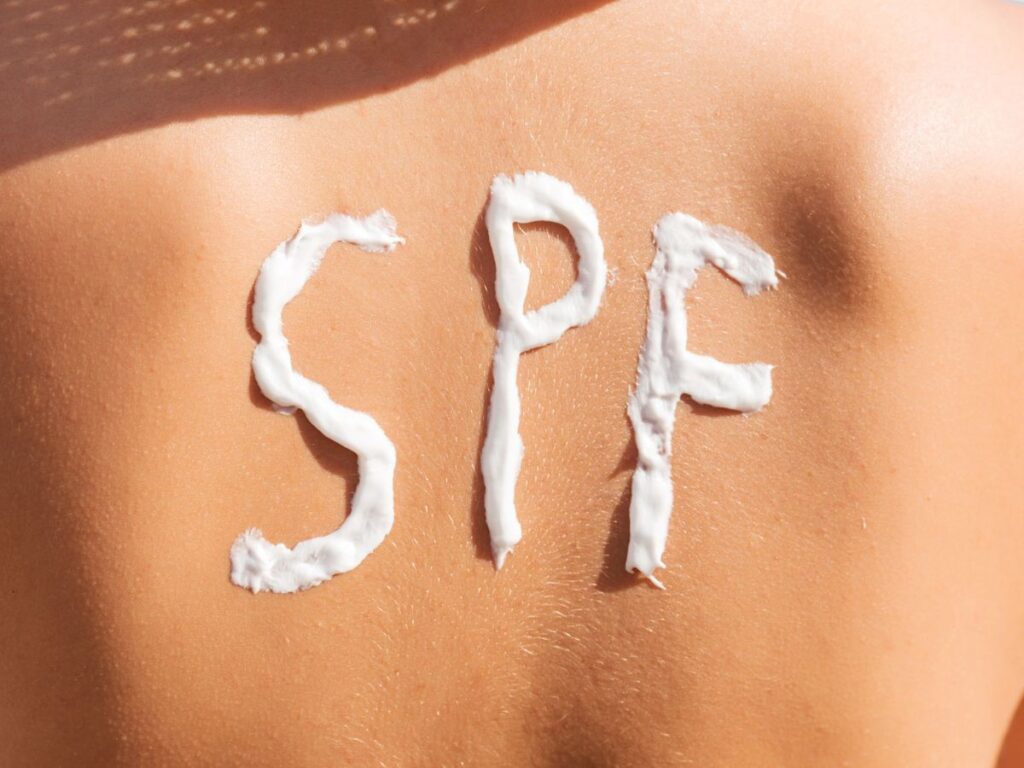
9. Frequently Asked Questions
I know that when you’re considering adding sunscreen to your product line, you’re bound to run into some common questions.
Here are the answers to the questions I hear most often:
- Will These Sunscreens Leave a White Residue?
This is one of the most common worries I hear from businesses and their clients. Most modern formulations, especially sprays and stick types, are designed to minimize or eliminate any chalky white cast. Your customers will appreciate knowing your products blend in quickly and leave skin looking natural.
- Are There Chemical Additives or Fragrances in These Products?
Many businesses want to offer sunscreens that are as natural as possible. Today, more and more sunscreens are free from unnecessary chemical additives, dyes, or artificial fragrances. That’s something your clients will want to know so they can highlight the gentle, skin-friendly qualities of your products.
- Are These Sunscreens Safe for Sensitive Skin?
Safety is always top of mind, and your customers are no exception. Sticks and sprays often have simpler, gentle formulas, but it’s still smart to look for mineral-based options like zinc oxide or titanium dioxide if you’re targeting sensitive skin. Products tested for hypoallergenic performance are a great selling point too.
- Are These Sunscreens Made with Natural or Organic Ingredients?
More and more people want to see natural or organic ingredients in their skincare. While not every sunscreen can be labeled organic, many brands use natural oils, butters, and mineral-based filters that fit the bill. Your clients will be looking for these clean ingredient lists to appeal to eco-conscious buyers.
- Which Texture is Most Popular for Customers?
Based on what I’ve seen, cream or lotion textures tend to be the most popular because they feel soft and rich. That said, sprays are gaining ground for convenience, while sticks are favorites for travel and sports. Offering a mix can help your clients cover all their bases and satisfy different preferences.
- How Often Should Sunscreen Be Reapplied?
This is a key question because it ties directly to how well a sunscreen works. Generally, it’s best to reapply every two hours or more frequently if sweating or swimming. Letting your customers know this can build trust and show that your brand is committed to real-world protection.
- Why is Sunscreen So Important for Skin Health?
Your customers might already know sunscreen protects from burns, but it also helps prevent premature aging and reduces the risk of skin cancer. It’s not just a summer product—it’s a year-round essential. Sharing this information can reinforce the value of your product line and give your brand a real edge.
10. How to Choose Between Sunscreen Stick and Spray
I’ve seen firsthand how choosing between a stick or spray can really shape how your sunscreen line is received. While both have their perks, each one has unique benefits that can fit your brand’s goals perfectly.
Application Control
Sunscreen sticks give you precise control when you’re applying them. They’re great for those delicate areas like the face, ears, or neck, where you want to be extra careful.
I like how easy it is to avoid overspray or wasted product with a stick—it’s all about clean, targeted coverage.
That precision can be a real advantage if you’re targeting health-conscious or active users. If your customers want zero mess and direct application, sticks are a safe bet.
Coverage and Speed
When you want to cover a large area fast, sunscreen sprays are a lifesaver. The mist spreads easily and dries down quick, which is perfect for busy days.
I’ve found sprays especially popular for outdoor activities or family-friendly product lines. But keep in mind, they might miss small spots if not applied carefully. If convenience and speed are top of mind for your customers, sprays can really stand out.
How Long It Lasts
One thing I always point out is how sticks really cling to the skin.
They use thicker bases like waxes and emollients that don’t budge as easily. Sprays are lighter and might need more frequent reapplication, especially if sweat or water is involved.
If your customers need reliable, long-lasting coverage, sticks have the edge. But for lighter sun exposure, sprays still hold up well enough to get the job done.
Feel and Comfort on the Skin
I know everyone has their preferences when it comes to texture. Sprays feel super lightweight and fresh, almost like you’re not wearing anything at all. Sticks, on the other hand, have a creamier feel that can actually be soothing and hydrating.
Your customers will love having that choice, some prefer the weightless touch of a spray, while others want the comfort of a nourishing balm. Listening to what they want can help you build a sunscreen line that truly clicks.
Dive Deeper Into Our Resources
Interested in discovering more? Gain instant access to our diverse range of products:
Still haven’t found what you’re looking for? Don’t hesitate to contact us. We’re available around the clock to assist you.
Conclusion
You’ve seen the details. Sticks for precise protection, sprays for quick coverage.
I shared how these choices can shape your brand’s future. It’s the little things, like texture and water resistance, that make all the difference.
So, what’s your next step?
Contact us today at TY Cosmetic and let’s build it together!


